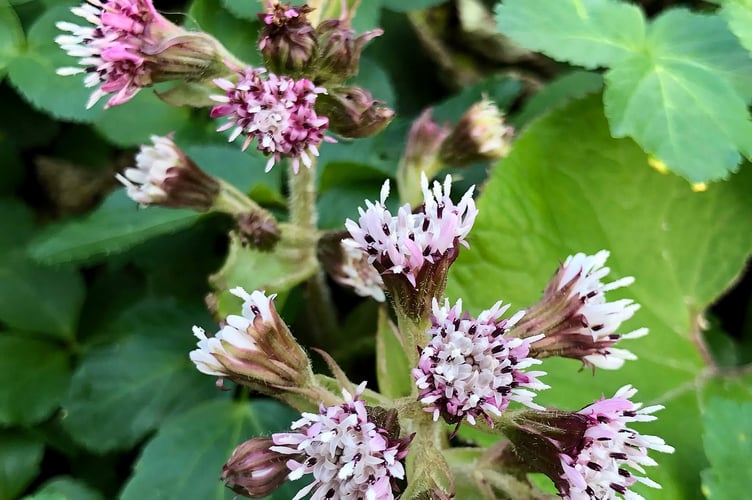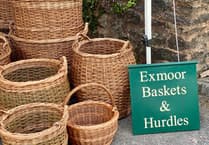DID you know that more than half the species of plants living in the UK are not truly native to our shores? In our gardens, we may cultivate species from overseas, but surely the common flowers we see on our Exmoor walks have always grown wild here?
In fact, many plants we think of as native actually escaped from gardens long ago and are now considered ‘naturalised’, that is, they are plants which have existed and reproduced in the wild for five years or more.
Other garden escapees may flourish briefly but are not able to produce viable seed. They flower for just one season, such as the petunias growing one summer on the seashore at Minehead, and then disappear.
Any alien plant, whose seeds land in a suitable place for germination, may begin to grow and flourish far from the original parent plant. The danger is that non-native plants may like their new surroundings so much that they crowd out native plants and become hard to eradicate. In their native countries they may also be kept under control by local creatures that do not live here.

Now there is another potent factor in encouraging the growth of non-native plants in our countryside. Climate change, bringing warmer and wetter winters, has encouraged the growth of plants which are from warmer climes.
These were formerly killed off or at least kept in check by cold, snow and frost, but the hot summers of recent years have allowed them to thrive.
Fifty years ago, when the Exmoor Natural History Society was formed, plants such as Alexanders, Triangular Garlic and Winter Heliotrope, all of which are now rampant on the moor, were considered scarce. Now they are all flourishing, at the expense of native flora.
Alexanders (Smyrnium olusatrum,) the greenish yellow umbellifer now common along the coast and increasingly spreading inland, was recorded as ‘rather rare’ at Blue Anchor and Watchet in 1896. A native of the Mediterranean region, it may have been brought to the UK by the Romans. Our new hotter summers suit it very well.
Winter Heliotrope (Petasites fragrans) was originally a garden plant. A native to Mediterranean regions, it now covers many roadside verges in our area.

The pink flowers appear in winter and are very strongly scented. This plant spreads voraciously by means of rhizomes, small rootlets, which used to be killed off by frosts. I do not recall ever finding it as a child 80 years ago.
Nor do I remember the Three-cornered Garlic (Allium triquetrum). If you find this in your garden, dig it up immediately, as it very quickly becomes ineradicable. Rather like a white bluebell, it too came from the Mediterranean area but was rare here until the 1960s. The broad-leaved Ransoms in our woodlands are native and pose no threat.
Montbretia (Crocosmia x crocosmiflora), an orange-flowered garden escapee which now grows along the banks of many Exmoor rivers, is sadly often eradicated simply for being ‘non-native’. However, Montbretia will persist, as its corky seeds and rootlets are washed down the river.
Another waterside plant, Indian Balsam (Impatiens glandulifera), has more reason to cause concern as it increases very quickly. It is the tallest British annual plant; its bright pink/mauve flowers can be strikingly beautiful.
Its exploding ‘touch-me-not’ seed-heads scatter the seeds far and wide. Brought to England from the Himalayas in the 1800s, it only began to increase fairly recently.
Alien plants such as the Knotweeds do deserve the concerted efforts to eliminate them. Japanese Knotweed (Fallopia japonica) and the similar Himalayan Knotweed (Persicaria wallichii) are notifiable plants because they form dense clumps which block rivers and roadsides.
I do not altogether agree with the current trend of removing aliens just because they are not native. Only when they become very invasive is it sometimes necessary to control things. My personal hatred is introduced garden daffodils in such places as the rare coastal heath on North Hill and in country lanes. My personal view is that they should be got rid of by all means!
For more information about the work of the Exmoor Natural History Society visit www.enhs.org.uk





Comments
This article has no comments yet. Be the first to leave a comment.